In this article, I will help you choose the compatible pearl gourami tank mates.
Choosing a proper tank mate is very important when it comes to the lifespan of fish. A wrong tank mate might stress your aquarium fishes and this might lead to a stressful environment.
There are various factors like the pH, the temperature, hardness of water, lighting conditions, size of fishes, behavior of fishes, and etc.
People Often ask about the best tank mates for Pearl gourami and are not sure about the tank mates, they should keep them with.
Here, I will recommend the best and compatible tank mates for pearl gourami considering all the aspects like the pH, temperature of water, food habitat, and various other aspects.
Pearl gourami is usually found in palaces like Malaysia, Sumatra, Borneo, and at some places in Thailand. Females in pearl gourami are found to be peaceful whereas males tend to show territorial behavior.
These pearl gourami’s are mid-dwellers and you will find them swimming mostly in the top portion of the fish tank. They require a minimum tank size of 20 gallons or more.
These fishes are omnivores in nature and they eat foods like pellets, flakes and sometimes even frozen foods. For beginners in fish keeping, these fishes are the best and I highly recommend this fish for fairly beginners as this doesn’t require much care.
For beginners, choosing the right tank mates plays an important role and this is because, beginners have no prior knowledge of fish keeping, and that might put them in trouble if they keep aggressive fishes.
Pearl gourami’s require a pH of around 5-5 to 7.5 and this pH is slightly acidic in nature. Tank mates for pearl gourami should be comfortable in this pH range to ensure a healthy environment as well.
Although, you can maintain and lower pH with all the natural methods without having to use chemicals.
A water temperature of around 77° to 82° F is what pearl gourami’s are comfortable with. So, you should be picking up a fish which is comfortable with such a temperature range.
They have a body shape that is elongated and laterally compressed. Pearl gourami’s like to live in a heavy vegetation in their wild habitat. Most of the fishes like to live in a natural habitat, and you can make your aquarium look similar to this using plantation.
An adaptive nature makes them stand out from other schooling or community fishes. This is the reason pearl gourami’s are comfortable with most of the fishes as tank mates.
Pearl Gourami tank mates
Here is a quick Infographic of pearl gourami tank mates!
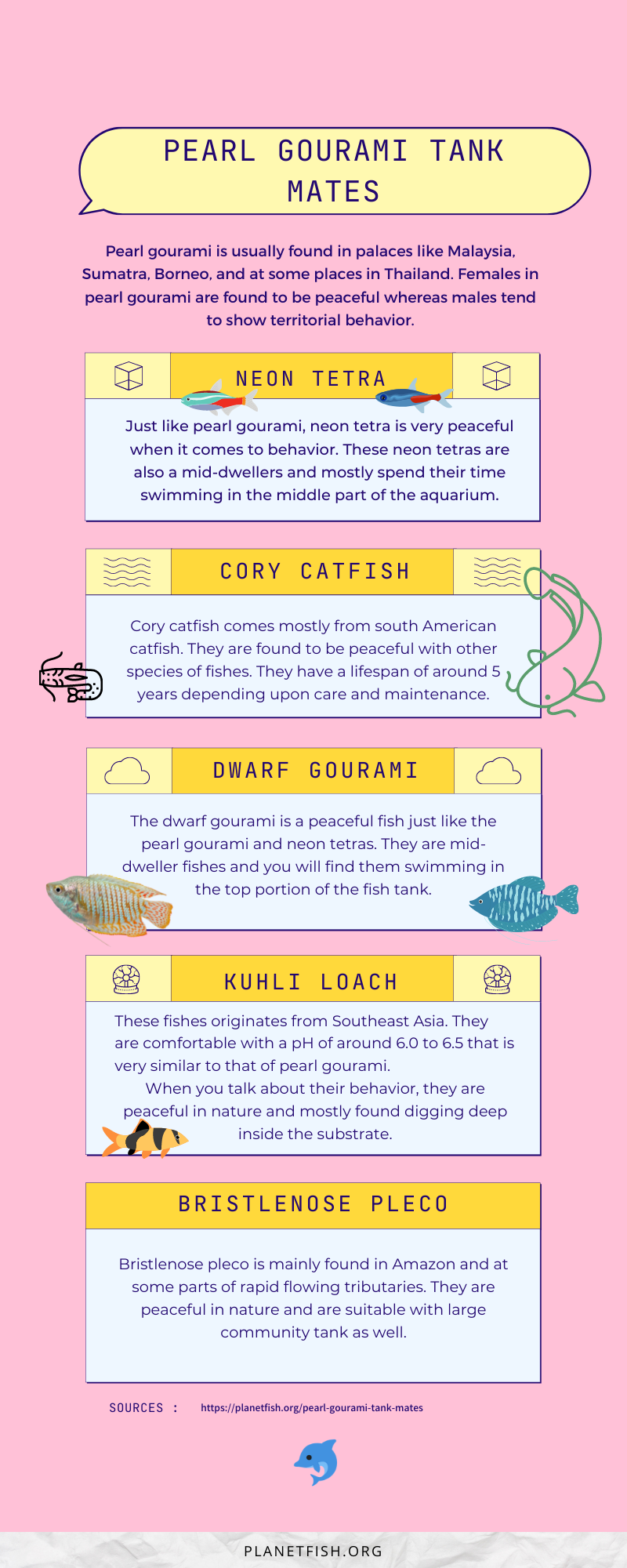
Neon Tetra
This first recommended tank mate for pearl gourami is neon tetra. Neon tetra originates from Southeastern Columbia, eastern Peru, and at some parts in western brazil.
Just like pearl gourami, neon tetra is very peaceful when it comes to behavior. These neon tetras are also a mid-dwellers and mostly spend their time swimming in the middle part of the aquarium.
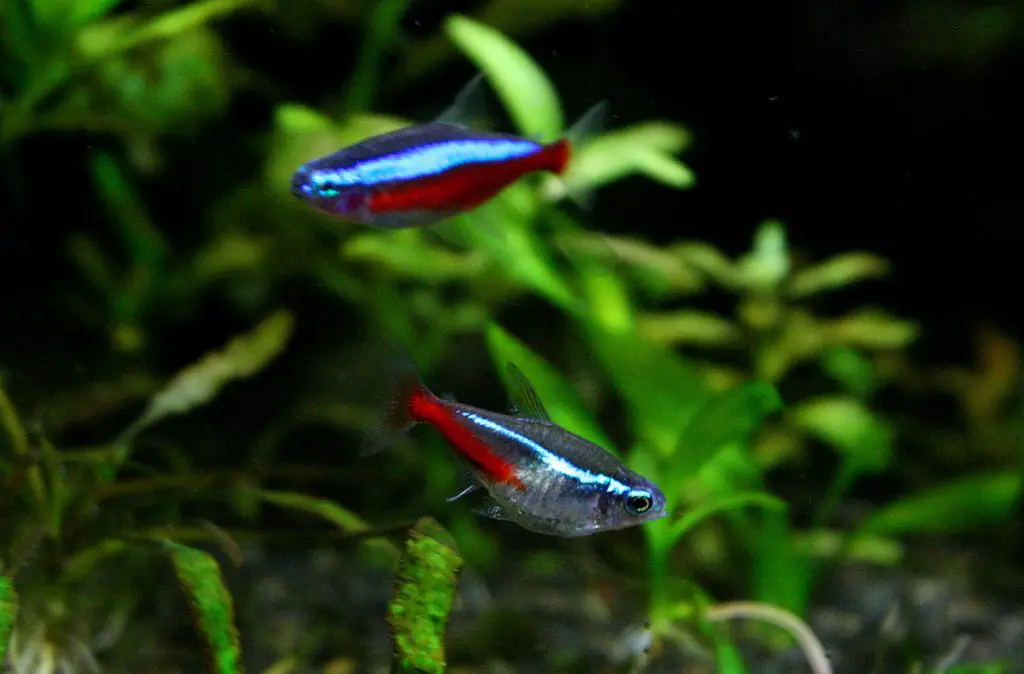
They require at least 10 gallons of fish tank and you should increase the quantity if you are planning to add more fishes. Neon tetras are colorful fishes just like pearl gourami’s in their appearance.
They have a vibrant bright color, but this color usually fades off during night when they are resting. They are quite happy when they are with lots of other neon tetras and with fishes like pearl gourami.
You can even pair them with Rasboras, small tetra, dwarf gourami’s, and small catfishes. Although, you should avoid adding larger fishes as they might eat neon tetras.
They are comfortable with a pH of around 7 and this pH is very similar to that of pearl gourami’s making them a perfect companion with similar living environment.
Neon tetras require a temperature of 68° to 79° F and even pearl gourami’s are comfortable with this temperature. Although, you can maintain an average temperature without hassle.
Neon tetras are also Omnivores in nature, and they mainly eat foods like Flakes, pellets, freeze dried blood worms, brine shrimps, and some other plant material.
We recommend feeding them varieties of foods, as this will keep them happy and make sure they are getting different varieties of nutrition for their faster growth.
Lastly, neon tetras can be very good as pearl gourami tank mates as they match most of the aspects and are found to be comfortable as suggested by many experienced fish keepers.
Cory Catfish
Cory catfish comes mostly from south American catfish. They are found to be peaceful with other species of fishes. They have a lifespan of around 5 years depending upon care and maintenance.
Just like Pearl gourami, and neon tetras, Cory catfishes are omnivores in nature, so, you shouldn’t find any issues while feeding them.
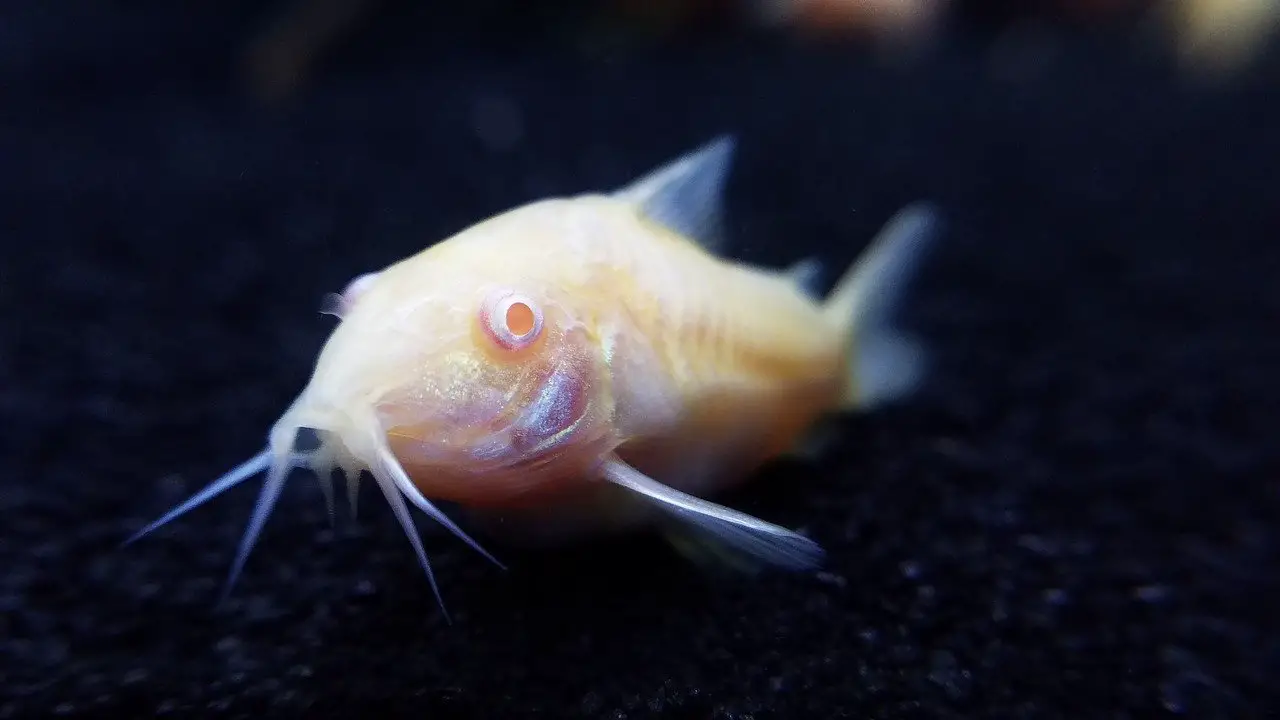
Most of the fishes like to live in a natural habitat and this is the reason, I recommend you to have a planted aquarium with fine substrate and a few plants with some natural driftwood.
Cory catfish are comfortable with a pH of around 5.5 to 7.0 that is very similar to that of pearl gourami and as well as neon tetras making them a perfect tank mates.
They like to be in water with temperature in the range of 70° to 78° F and even pearl gourami are suitable and comfortable with this temperature range.
Cory fishes get stressed out in high nitrate levels, and to prevent this test the water regularly and try to keep it at 0ppm. Stressed fishes often are prone to diseases. Hence, to prevent this you should monitor and make sure your fishes are healthy and fine.
In the wilder habitat, they eat foods like small insects, worms, blood worms, larvae, and other few plant material. Consider feeding them a mixed diet as this provides them proper diet and keeps them healthy.
You can also feed pearl gourami and Cory catfish with foods like
- Shrimp pellets
- Flakes
- Blood worms
- Algae wafers
- Plant matter
You can feed them once a day for about 3 to 4 mins of feed time.
Dwarf Gourami
The next fish I recommend is Dwarf gourami. Dwarf gourami is originates from India, West Bengal, Assam, and Bangladesh.
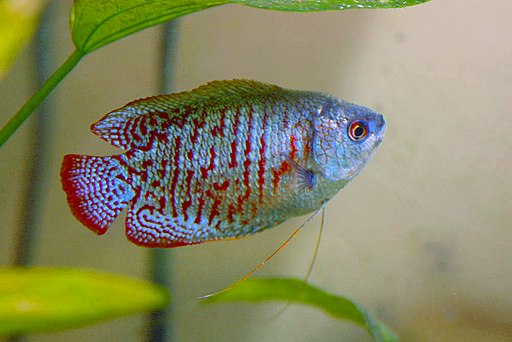
The dwarf gourami is a peaceful fish just like the pearl gourami and neon tetras. They are mid-dweller fishes and you will find them swimming in the top portion of the fish tank.
When it comes to their diet, they are omnivores in nature and they mostly eat different types of food in their wilder habitat.
They are comfortable with a pH of around 6.0 to 7.5 and even pearl gourami is comfortable with this pH range, and this is great to pair them up.
If you are fairly new to fish keeping world then, this fish might be a little hard to care. But still most of the beginners found no problem with keeping this fish in their aquarium.
Dwarf gourami requires are comfortable at a temperature range of 72° to 82° F, with this temperature even pearl gourami are comfortable.
Right?
But, If you pair pearl gourami with fishes that are comfortable with similar range temperature, then you shouldn’t find any problems to keep them as tank mates.
But remember, you should consider all the other factors as well.
These are some of the foods dwarf gourami is comfortable eating
- Small Insects
- Larvae
- Flake food
- Freeze-dried foods
- Frozen foods
- Worms
At last, I would say dwarf gourami’s can be good pearl gourami tank mates as they require very similar living environment.
Kuhli loach
These fishes originates from Southeast Asia. They are comfortable with a pH of around 6.0 to 6.5 that is very similar to that of pearl gourami.
When you talk about their behavior, they are peaceful in nature and mostly found digging deep inside the substrate.
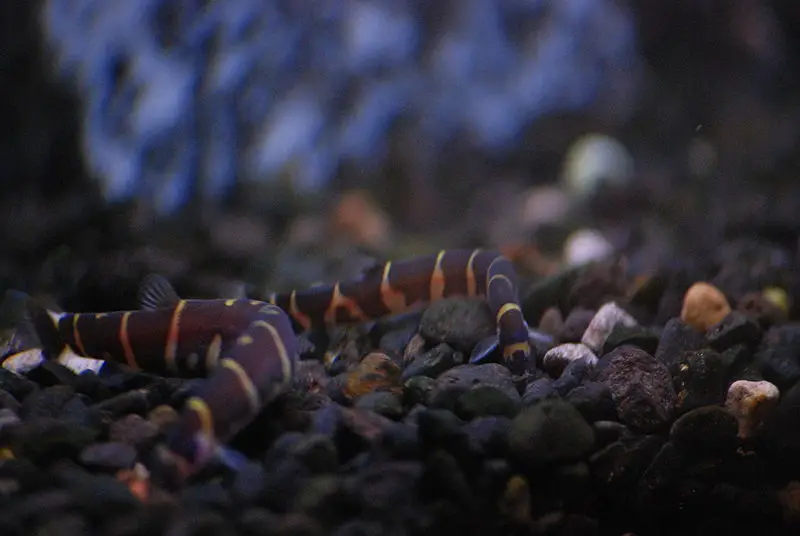
As pearl gourami, dwarf gourami, and neon tetras are mid-dwellers, the Kuhli loach doesn’t like to swim in the top portion of the aquarium making them different from other fishes.
Just like pearl gourami, kuhli loaches are omnivores in nature meaning they can eat both plant material and flesh. In the wilder conditions, they are often found to be eating foods like tiny shrimps, larvae and some some plant material.
You can feed them protein rich foods with live foods. Although, both the Kuhli loach and pearl gourami are comfortable eating Blood worms, Water fleas, Brine shrimp, and tubifex.
They also like to eat frozen-dried kind of food, flakes and pellets. As they are bottom-dwellers, they are not going to swim on the top portion of the aquarium to eat their food. Hence, you can feed them foods that settle down in the aquarium, and kuhli loaches can take their snack at the bottom of aquarium.
They are a bit curious type of fishes, and this is the reason you will find them digging the substrate. These kuhli loaches are comfortable with a temperature range of around 75 to 86° F.
You can maintain an average temperature range comparing both the fishes. Although, in most cases, they get adjusted with the temperature. You can alter the temperature only if you find them stressful.
Their body is very similar to that of eel with some yellow strips in their body. The eyes of Kuhli loaches are covered with a thin transparent skin.
You will find them to be happy when kept them groups of the same species. However, you can still keep them with pearl gourami as both of them are peaceful in nature.
I don’t recommend you to keep Kuhli loaches with aggressive and territorial type of fishes as they might not get along easily and you will find them fighting most of the time.
Considering over all factors, Kuhli loaches can be great tank mates with pearl gourami.
Bristlenose Pleco
Bristlenose pleco is mainly found in Amazon and at some parts of rapid flowing tributaries. They are peaceful in nature and are suitable with large community tank as well.
Bristlenose pleco can be a great as Pearl gourami tank mates.
Upon observing, you will mainly find them at the bottom part of the aquarium as they are bottom dweller.
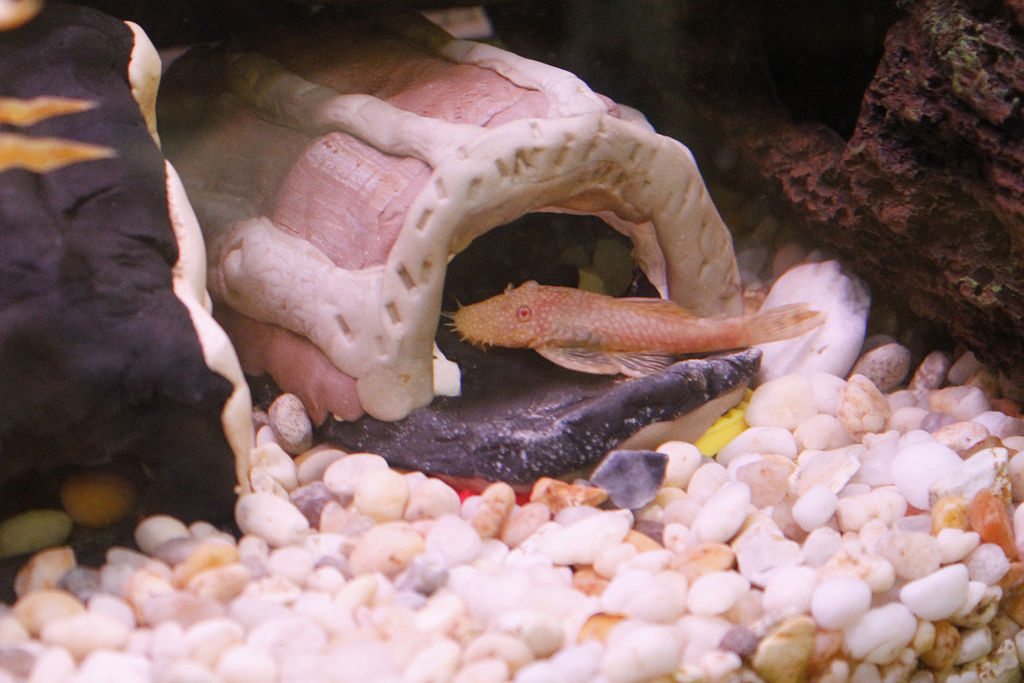
They are found to be comfortable with a pH range of around 5.8 to 7.8 that is similar to that of pearl gourami.
Even these fishes are comfortable with slightly acidic water without any hassle. Although, I recommend you to alter the pH only if you find them stressful and uneasy.
Most of the fishes tend to get adapted without you having to change the pH range. Although, I only recommend you to change pH using natural ways like adding Driftwoods, etc. These methods are totally safe without any chemicals.
Bristlenose plecos are happy with the temperature range of 73° to 81° F that is very similar to that of pearl gourami’s, and this is the reason I recommend you Bristlenose pleco as a tank mate for pearl gourami.
They both are peaceful in nature making them easy to manage and maintain for fish keepers. When compared to pearl gourami’s, the Bristlenose pleco are herbivores in nature and they mainly eat algae, or spirulina wafers.
You can feed them once or twice daily. Remember not to overfeed your fishes. You can notice their coloration, a well feed Bristlenose pleco is usually bright in color.
Cherry barbs
Cherry barbs are beautiful and are quite attractive and this is the reason most of the fish-keepers prefer cherry barbs in their aquarium.
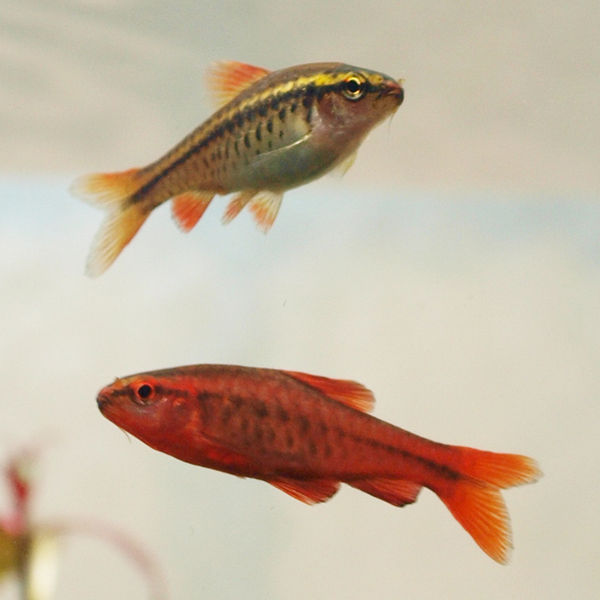
The cherry barbs can live anywhere from 5 to 7 years depending upon the care and maintenance. With all the conditions like the pH, the temperature, proper diet, and with clean environment, they can live up-to 7 years or more in wilder conditions.
The name cherry says their pretty red color that is very shiny from their head to toe. Males in cherry barbs are brighter and show vibrant color as compared to females.
They are comfortable with a water temperature of 73° to 81° F, and even pearl gourami’s are comfortable with this temperature range.
Just like pearl gourami, cherry barbs are comfortable with slightly acidic water ranging from 6 to 8 pH level making them a perfect tank mate.
Although, you can test water regularly and keep a track of it. Alter pH and temperature only if you find find yours fishes stressed.
When you talk about the diet of cherry barbs, they are omnivores in nature meaning they can eat both plant material and flesh material too. In their wilder habitat, they eat insects, worms, algae, and plankton.
You can feed both the pearl gourami and cherry barbs with a mixed diet, as this will make provide them with plenty of nutritional value in their diet.
Overall, cherry barbs can be a good tank mate with pearl gourami considering all the various factors like the pH, temperature, typical behavior, food and diet and various other aspects.
These would be best Pearl gourami tank mates that are suitable with almost all the aspects like the pH, temperature of water, Food and Diet habit, Typical behavior of the fish and etc.
- Neon tetras
- Dwarf Gourami
- Cory catfish
- Kuhli loaches
- Danios
- Cherry barbs
- Bristlenose pleco
Concluding Thoughts
Overall, I have recommended the best and the most suitable tank mates you can pick from. But, make sure to get similar sized fishes as that would make them feel comfortable and happy.
Alter the pH, temperature only if you find your fishes to be stressed. Most of the fishes get adjusted to the environment. Although, you can maintain an average temperature of both the fishes.
A natural planted aquarium is quite good, as they resemble their wilder habitat and makes them feel like they are living in natural environment.
You can use some driftwood and some rocks that will give a natural touch to your aquarium.
What fish are you thinking to choose? Do let me know in the comment section below!
